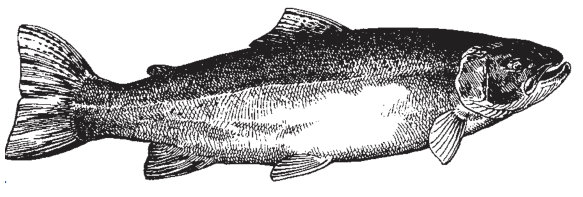Protecting critical water habitat
Moxlie Creek begins as an artesian spring in Watershed park. It’s joined by Indian Creek which begins in Bigelow Lake and then flows through the center of town in a half mile long culvert.
Occasionally chinook and coho salmon and cutthroat trout can be found in the creeks despite the long culvert. Estuaries are the beginning of the marine food web, the area of intertidal exchange that supports plankton that in turn support water quality. There is no more critical habitat on earth than a salmon-bearing estuary like Olympia’s Moxlie Creek. In 2014 the Olympia Urban Waters League (OUWL) began advocating for the restoration of Moxlie and Indian Creeks.
Development threatens restoration of Moxlie Creek
A large development proposal in the heart of the estuary would destroy any meaningful opportunity for restoration. Such a proposal materialized in 2017. Walker John, a developer of several downtown Olympia projects, proposed the construction of three buildings containing 86 residential units and 8,500 square feet of commercial space on property to be leased from the Port of Olympia at 510 State Ave.
The proposed Westman Mill development would lie in the historic center of the Moxlie Creek estuary. The entire estuary at one time totaled several hundred acres. An estuary can only be where it is. It can’t be remediated elsewhere. This is the only portion of the historic estuary that’s available.
Nature remains unprotected in the courtroom
The development moved easily through the review process, ultimately securing a State Environmental Policy Act (SEPA) Determination of Non-Significance (DNS). The intent of the SEPA checklist grows out of the state’s mantra “no-net-loss.” In actuality, by not fixing damaged places, we continue to see net losses. As long as Olympia is sitting on 160 miles of culverted surface waters, we’ll continue to see downward spirals in species and water quality in Budd Inlet and Puget Sound.
Last month OUWL appealed the DNS before Olympia’s Hearing Examiner, the third appeal of its type in two months pertaining to real estate determinations of non-significance. All were thrown out for “lack of standing” —the appellants failed to prove they would be immediately, personally damaged by the developer’s actions.
One reason other species don’t have standing is because they can’t stand up in court and talk. A human would have to speak on behalf of an orca, salmon or grebe: “’I’ will be damaged by this action in the following ways.” Well, why not? And why does our legal system treat nature as property instead of rights-bearing entities?
“Rights of Nature” could give the environment a voice
“Rights of Nature” could solve the burden otherwise posed by the requirement that someone be immediately harmed in order to have “standing” to sue in a court of law. An approach based on “Rights of Nature” advocates legal representation for natural objects in the environment, or the environment as a whole. It acknowledges that nature itself has value and holds rights that must be respected—the right to exist, persist, maintain and regenerate vital cycles. Mankind thus has the legal authority and responsibility to enforce those rights on behalf of ecosystems.
In the last decade, several municipalities in the US adopted ordinances enshrining a legal right for nature within their boundaries. Tamaqua Borough and Pittsburg, PA are two examples. Of course, this view represents a shift from the Western legal culture of consumerism, capitalism and predation of nature, to one more attuned to present understanding of human and natural interrelationships as well as to philosophies from indigenous groups.
Harry Branch is a long-time sailor and community member who has been working for decades on ecological issues in the Pacific Northwest.

Olympia can do this.
See also http://www.huffingtonpost.com/kate-beale/rights-for-nature-in-pas_b_154842.html
“In the Schuylkill Region’s Tamaqua Borough, located roughly halfway between Philadelphia and Pittsburgh in the heart of Pennsylvania’s Coal Region, an idea which has long lingered on the far fringes of the environmental movement has apparently taken root. In September, 2006, the borough became the first U.S. municipality to recognize legal rights for nature.
More than 100 communities in the traditionally conservative region have followed suit, passing ordinances stripping corporations of long-held legal rights, and bestowing them instead on ecosystems and natural communities.